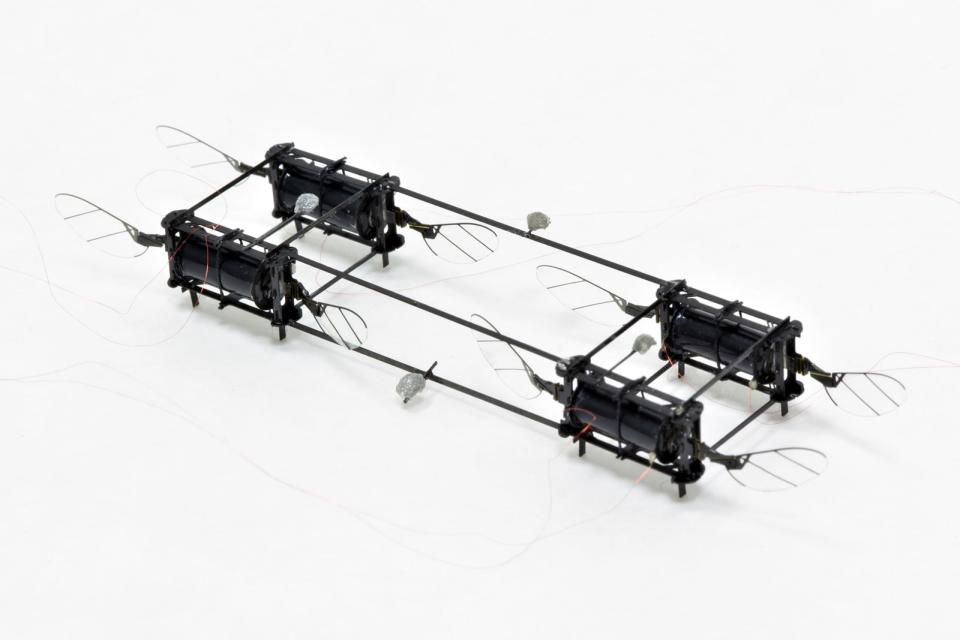Robot bees can crash into walls without taking damage
Soft muscles prevent the bots from taking a bruising.
Tiny robotic fliers aren't exactly durable at present, but they may be tough critters before long. Harvard researchers have developed a RoboBee that uses soft, artificial muscles (really, actuators) to fly without taking damage. The robot can smack into walls, crash-land or even collide with fellow 'bees' without getting hurt. Soft-muscle fliers have existed before, but this is the first with enough power density and control to hover -- that is, it's not just flying wildly.
The trick was to improve the power density through refined materials. The actuators are made with dielectric elastomers that deform under an electric field and have good insulating properties. Their upgraded electrode conductivity helps them operate at the same 500Hz as the stiff actuators found on other bots this size. They're easy to assemble and replace, too, so you could scale up with more wings and actuators to handle more complex tasks. It took a model with four actuators and eight wings to hover in a controlled manner.
The technology still isn't very efficient compared to conventional robots. Researchers hope to improve the technology, though, and they'd eventually like to sell it. If they do, there are numerous potential uses. Harvard imagines these robots being useful for search-and-rescue missions, where a robot might have to navigate dangerous rubble looking for survivors.


